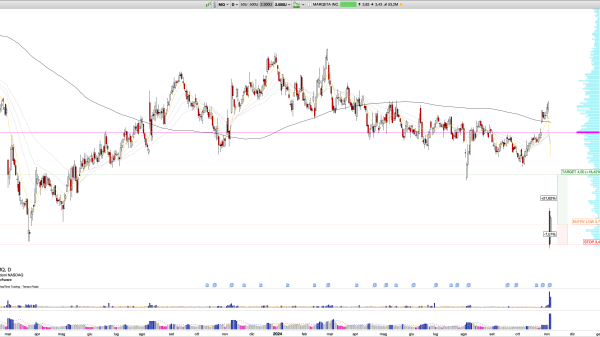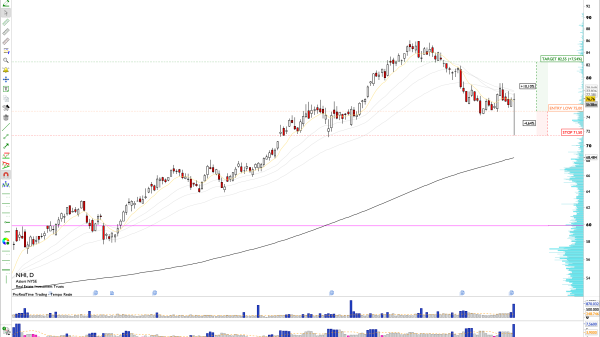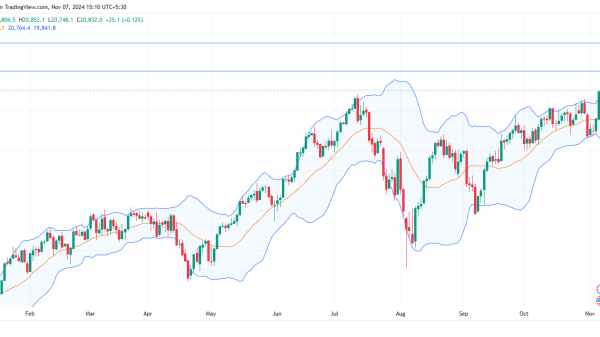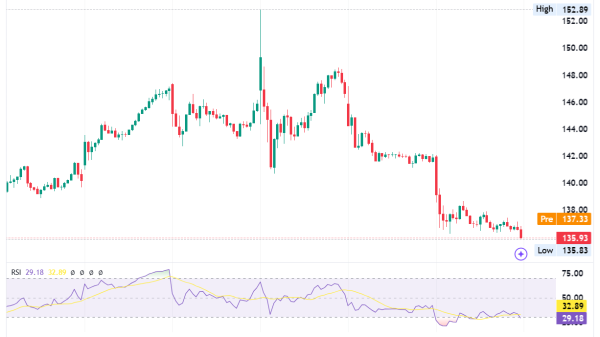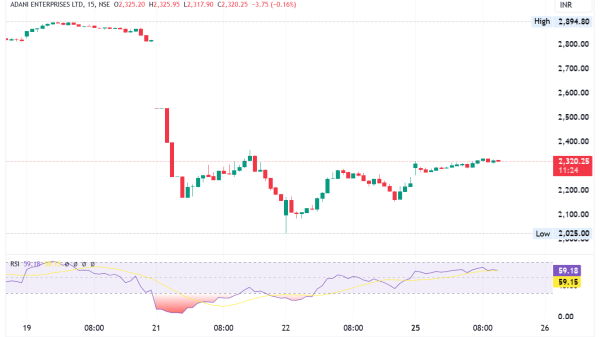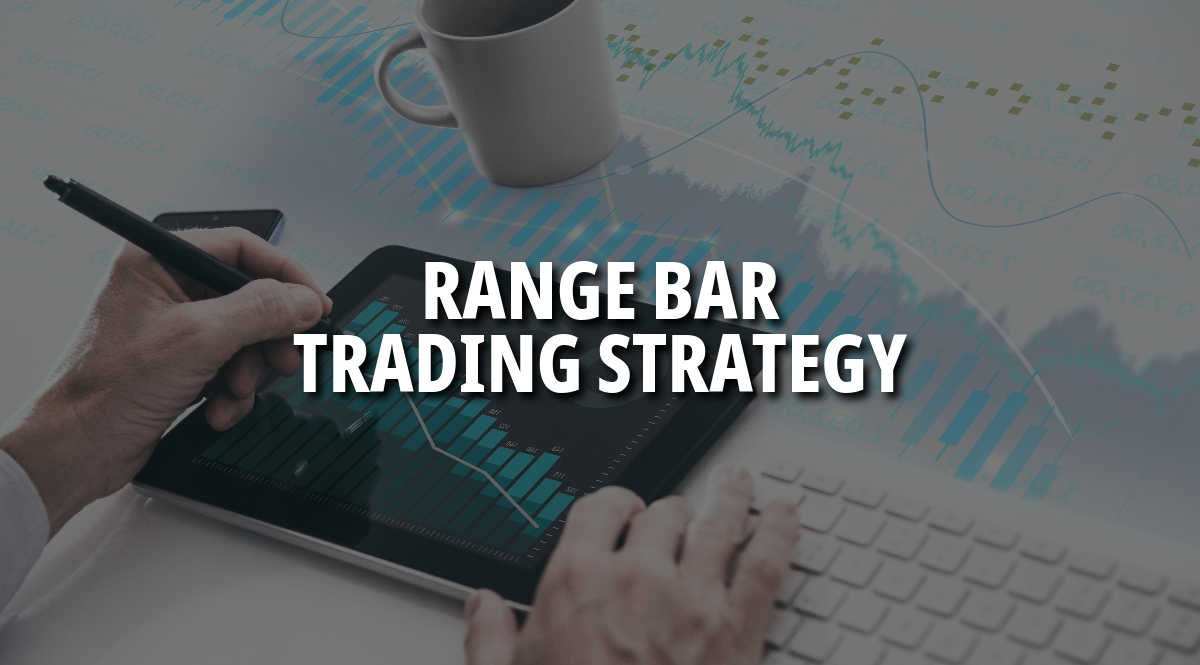Understanding Range Bar Trading Strategy: The Basics
The majority of price charts in trading are time-based, meaning they represent price movements over a set time interval. Nevertheless, there are other chart types that don’t rely on time but instead focus on a specified price movement size. One of these unique chart types is the range bar chart. So, let’s delve into what a range bar trading strategy is.
Range bar strategy is a trading strategy that focuses on capturing price movements within a specified range, rather than time-based intervals. It is worth noting that the range bar trading strategy is a trend-following strategy.
This comprehensive guide will delve into what range bar trading is, its history, how to trade range bars, and the pros and cons of this strategy.
What is a range bar?
A range bar is a type of price chart that is independent of time. Unlike traditional time-based charts, such as candlestick or bar charts, where each bar represents a fixed time period (e.g., one minute, one hour), range bars focus on price movement.
History of Range Bar Trading strategy:
Range bar is a relatively modern concept, and its origin can be traced back to a Brazilian trader named Vicente Nicolellis Jr. in the mid-1990s.
Nicolellis developed the concept of range bars to filter out market noise and focus on significant price movements. His approach aimed to provide a clearer view of price action by eliminating the time factor entirely.
Nicolellis’ invention gained popularity in the trading community, especially among forex and futures traders. Over time, various trading platforms and charting software began to offer range bar charts as an alternative to traditional time-based charts.
How to trade range bars:
Trading with range bars involves a specific set of rules and techniques. Here’s a step-by-step guide on how to trade using range bars:
Choose a trading platform: Start by selecting a trading platform or charting software that supports range bars. Not all platforms offer this feature, so ensure you have access to the necessary tools.
Select a price range: Decide on the price range for your range bars. This range should align with your trading strategy and the market’s volatility. Shorter ranges are suitable for scalping, while longer ranges are better for swing trading.
Analyze range bars: Study the range bar chart to identify patterns, trends, and potential entry and exit points. Pay attention to the relative size and direction of the bars.
Set entry and exit rules: Develop a clear set of entry and exit rules based on your analysis. Range bars can help you identify breakouts, reversals, and trend continuation patterns.
Risk management: Implement risk management strategies such as setting stop-loss orders and position sizing to protect your capital.
Practice and refine: Before risking real capital, practice trading range bars in a demo account to refine your strategy and gain confidence.
Execute trades: Execute your trades based on your predetermined rules and monitor the range bars for potential changes in market conditions.
Review and adjust: Regularly review your trading performance and adjust your strategy as needed. Keep a trading journal to track your trades and learn from your successes and mistakes.
Common strategies
There are many ways to trade range bars, but the common ones are trend following, momentum, and breakout strategies.
Trend following:
This strategy is well-suited for range bar trading due to the clarity they provide in identifying and riding trends. Range bars help eliminate noise and emphasize significant price movements. Traders can easily apply trendlines to range bars to visualize trends.
Additionally, range bars allow for effective trailing of profits by setting trailing stops based on a specific number of range bars away from the current price, ensuring that traders stay in the trend until its very end.
Momentum strategies:
Momentum strategies are favored by swing traders who seek to capitalize on individual impulse waves within a trend. Range bars can enhance the accuracy of these strategies by highlighting areas of support and resistance where pullbacks may reverse, initiating new impulse waves in the direction of the trend.
Traders can also use trendlines on range bars as dynamic support or resistance levels for trading new price waves. This approach helps traders pinpoint entry and exit points more precisely.
Breakout strategies:
Range bars are particularly effective for breakout trading strategies because they make trends and support/resistance areas more visible. When trading breakout strategies with range bars, it becomes easy to confirm when prices break out of a resistance/support level or a trendline.
The unique feature of range bars is that they filter out choppy price action, ensuring that traders can identify clean and decisive breakouts. This clarity in price movements is advantageous for executing breakout trades effectively.
Pros and cons of range bar trading:
Let’s start with the advantages.
Noise reduction: Range bars eliminate time-based noise, providing a cleaner representation of price movement by focusing solely on significant price changes.
Clear entry and exit signals: Range bars help traders pinpoint key support and resistance levels, facilitating more precise entry and exit points, and thereby improving trading performance.
Emotion control: Range bars offer objective and clear trading signals, reducing emotional trading and promoting more rational decision-making.
Compatibility with indicators: Traders can combine range bars with other technical indicators, such as moving averages or oscillators, to gain a more comprehensive view of the market.
What about the disadvantages?
Less familiar: Range bars are a relatively recent addition to charting techniques, and some traders may be less familiar with them compared to traditional chart types.
Range selection critical: Selecting an appropriate range for range bars is crucial for their effectiveness. The chosen range must align with the specific market conditions and trading strategy.
Lack of volume consideration: Range bars are solely based on price movement and don’t account for trading volume. This limitation can be significant for traders who rely on volume-based indicators in their analysis.
Vulnerable to market gaps: Range bars can be affected by market gaps, where prices skip levels without trading in between. These gaps can lead to larger or smaller range bars than expected, potentially affecting analysis accuracy.
Effectiveness in certain conditions: Range bars may be less effective in choppy or congested markets where price movements are limited and may not provide clear signals.
Applicability to trading styles: Range bars may be better suited for specific trading styles, such as swing trading or position trading, and may be less suitable for day trading, depending on individual preferences and strategies.
Range bars and Japanese candlesticks
Range bars and Japanese candlesticks are distinct charting methods used by traders to analyze price movements in financial markets. Here are some fundamental differences between the two:
Construction:
Japanese candlesticks: Japanese candlesticks are based on time intervals, such as 5-minute candles or 1-hour candles. Each candle represents a specific time period and includes the open, high, low, and close prices during that period.
Range bars: Range bars are built around price movement intervals. They are created by setting a predetermined price range for each bar. When the price moves beyond this range, a new range bar is formed.
Noise reduction:
Japanese candlesticks: Japanese candlesticks may capture short-term price fluctuations and noise, as they are time-based and record price data at regular time intervals.
Range bars: Range bars excel at filtering out noise caused by small price movements. They provide a cleaner view of the market by focusing on significant price changes.
Representation of market conditions:
Japanese candlesticks: Japanese candlesticks offer insights into market sentiment and the strength of trends.
Range bars: Range bars are adept at identifying crucial support and resistance levels, making it easier to recognize key price levels and potential breakouts.
Ease of use:
Japanese candlesticks: Japanese candlestick charts are widely recognized and familiar to many traders. They are a conventional charting method, making them easy to use and interpret.
Range bars: Range bars are less commonly used and may require some adjustment for traders accustomed to Japanese candlesticks. Traders new to range bars may need to invest time in learning and adapting to this charting technique.
In conclusion, range bar trading is a price-based strategy that offers traders a unique way to analyze and trade financial markets.
While range bar trading has several advantages, such as reducing noise, adapting to volatility, and providing a clearer view of price action, it also has its drawbacks, including limited historical data and a steeper learning curve.
Traders interested in range bar trading should carefully consider these pros and cons and practice their strategy in a demo account before trading with real capital. As with any trading approach, risk management and discipline are crucial for success.
Focus Keyword: range bar trading strategy
Related KWs: Range Bar Charting, Volatility Trading, Price Action Trading, Support and Resistance Levels, Market Trends, Technical Analysis Indicators, Swing Trading, Candlestick Patterns, Forex Range Trading, Intraday Trading Strategies, Trading Timeframes.
Meta-description: What is so special about range bar trading strategy? A price-based strategy offers traders a unique way to analyze financial markets.
The post Understanding Range Bar Trading Strategy: The Basics appeared first on FinanceBrokerage.



